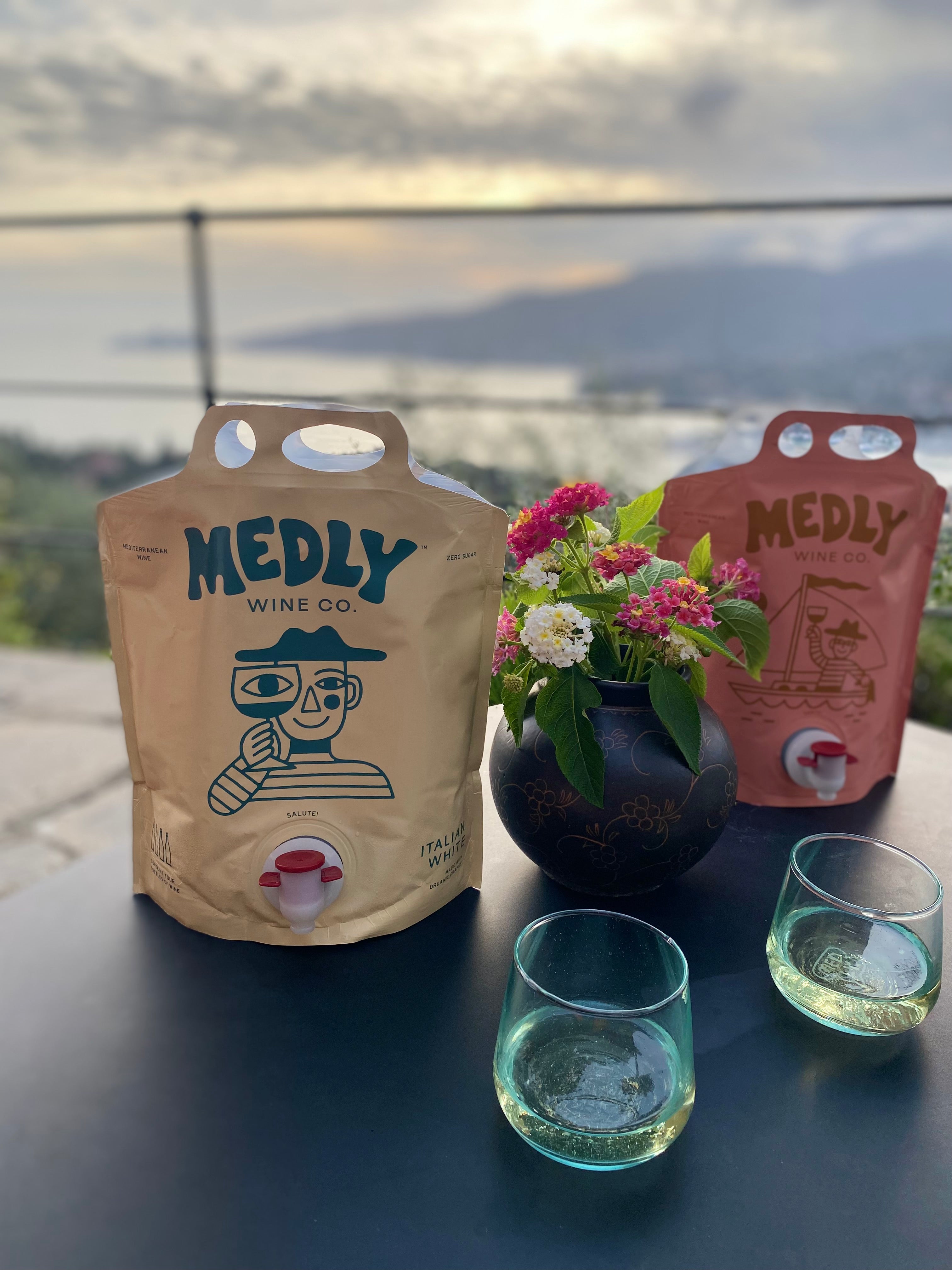Italian Wine Classifications: A Smart Girl’s Guide to Sipping with Confidence
There’s something empowering about sipping an Italian wine and actually knowing what the label means. From VdT to DOCG, Italian wine classifications can sound intimidating - but they’re your shortcut to smarter sipping. Here’s your guide to decoding the terms, understanding the tiers, and choosing wine with confidence.
What Are Italian Wine Classifications - and Why Should You Care?
Italy takes its wine seriously. Like, regulations-and-government-seals seriously. And honestly, we love that. A system that helps you understand what kind of wine you’re drinking, where it came from, and how much care went into making it.
Think of the classifications like levels on a wine quality pyramid. They don’t tell you if a wine is “good” or “bad” (plenty of incredible wines don’t bother with the top tiers), But they do offer clues about style, origin, and tradition.
And a quick disclaimer: knowing the difference between DOC and IGT doesn’t make you pretentious. It makes you someone who knows their grapes.
What Are The Four Quality Levels Of Italian Wine? TL:DR Version
Italian wine labels love a good acronym, but decoding them shouldn't feel like a quiz. Here's your no-nonsense cheat sheet to the four quality levels
-
VdT (Vino da Tavola): Table wine. No rules, no region. Every day sipping.
-
IGT (Indicazione Geografica Tipica): Regional origin with flexible winemaking. Creative, bold, and often great value.
-
DOC (Denominazione di Origine Controllata): Traditional wines from specific areas, with rules on grapes, aging, and production.
-
DOCG (Denominazione di Origine Controllata e Garantita): The highest tier. Strict standards, government tasting, numbered seal. Italy’s wine royalty.
Vino da Tavola (VdT): Table Wine
This is Italy’s broadest tier - table wine. It doesn’t have to follow any regional rules, and it usually doesn’t list vintage or grape varieties. It’s the wine equivalent of leggings, totally fine, low-effort, and sometimes surprisingly enjoyable. But not exactly what you reach for when you want to impress.
We respect VdT for what it is, but Medly isn’t about cutting corners. Our wines are organic, clean, and made with purpose - not just made to fill a glass.
IGT (Indicazione Geografica Tipica): Where the Magic (and Rule-Breaking) Happens
IGT wines come from a specific region but give winemakers creative freedom. They can use international grapes, play with blends, and skip some of the stricter rules that come with DOC and DOCG status.
This is where Italy gets bold. Unfiltered. Experimental. Like a perfectly tousled messy bun - casual, but intentional. Some of the most iconic wines live in this category because they didn’t want to be boxed in by traditions.
Our Organic Italian White totally vibes with this energy. Made from radiant Sicilian fruit, it’s crisp, dry, and made without sugar or additives. It's wine that doesn’t need to explain itself - just like you.
DOC (Denominazione di Origine Controllata): Tradition With a Trademark
Wines labeled DOC follow regional rules that cover everything from grape varieties to yield, alcohol content, and how long the wine must age. Basically, they have to check a bunch of boxes to qualify - and those boxes are all about quality and place.
They’re rooted in regional identity and have to pass local tasting panels. It’s the wine world’s equivalent of being verified, without having to blue-check your Instagram.
DOCG (Denominazione di Origine Controllata e Garantita): The Wine Royalty
DOCG wines are the highest tier. These wines go through even stricter controls - tasting panels, chemical tests, and all the serious stuff that says, “I’m worth the attention.” Every bottle gets a numbered government seal, like a designer bag that comes with authentication.
We’re talking regulations so strict that fewer than 80 wines qualify as DOCG. These are wines for lingering dinners and long conversations - the kind you sip slowly while pretending you’re in a hillside villa.
Medly’s wines aren’t DOCG, but they do pull from the same rich, character-driven regions. We’re just not into overcomplicating things. You can taste the intention and elegance in every pour, without the corkscrew or the wait.
What Is the Difference Between DOC and DOCG Wines?
It’s all about the rules - and the red tape.
DOC wines follow regional guidelines: what grapes can be used, where they’re grown, how the wine’s made, and how long it ages. They’re verified by local tasting panels and represent tradition with structure. Think: dependable, expressive, and rooted in place.
DOCG wines take it a step further. Same idea, just with more oversight. These bottles have stricter production standards, lower permitted yields, mandatory government tastings, and a numbered seal on every bottle. It’s Italy’s way of guaranteeing the quality.
So yes, DOCG sits higher on the classification ladder, but that doesn’t always mean it’s better for you. Some winemakers skip the top tier on purpose to keep their creative freedom or avoid the extra steps.
As always, we strongly feel that wine should be chosen based on personal taste over title.
Are There Other Quality Classifications for Italian Wines?
Italy’s official system centers on VdT, IGT, DOC, and DOCG, but a few extra terms sneak onto labels and menus. These aren’t separate quality levels, but they do give you bonus info about how the wine was made.
Think of them as wine-world subtleties, not secret codes. You might spot words like:
Classico: This means the grapes came from the original, historic heart of a wine region. Usually, a good sign if you're into authenticity with a capital A.
Superiore: A little more alcohol, a little more aging. It’s like the wine hit the gym and came back with structure.
Riserva: Aged longer. Often smoother, richer, and made to be savored slowly (ideally with good friends and better cheese).
Passito: Made from dried grapes, which means it’ll likely be richer and sweeter.
Spumante/Frizzante: These show up on sparkling wines. Spumante is fully bubbly; Frizzante is gently fizzy.
None of these change the wine’s DOC or IGT status, they just give you a few more clues about what to expect in your glass.
Here’s the Real Takeaway
Italian wine classifications are helpful, but they aren’t gospel. Some of the best wines out there are IGT or even VdT- not because they aren’t “good enough” for DOCG, but because their creators decided to prioritize flavor, sustainability, and creative freedom over bureaucracy.
(That’s basically our love language.)
At Medly, we honor the tradition behind these labels - then do things our own way. Our wines are 100% organic, zero sugar, and come in sleek, spouted pouches that are better for the planet and your fridge. We care where the wine comes from. We just don’t think it needs to show up in a heavy bottle to prove it.
Your Wine Era Is Here
You're not just drinking wine. You’re choosing wines that match your values: clean, conscious, and casually elegant. You don’t need a corkscrew, a cellar, or a glossary. You just need great taste – and a spout that doesn’t spill.
We’re here for wine that’s better for you, your friends, and the planet. Medly isn’t about drinking more. It’s about drinking smarter. With wine that travels well, chills quickly, and comes from places that know how to grow something truly special.





